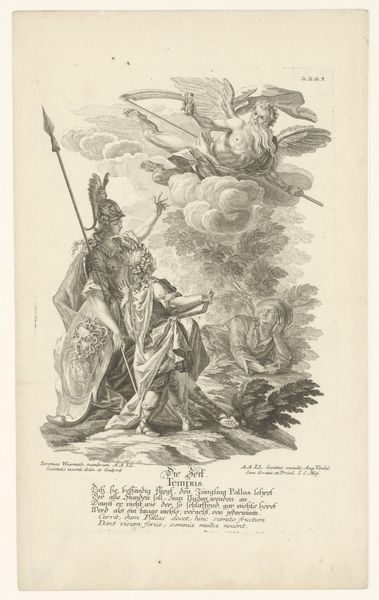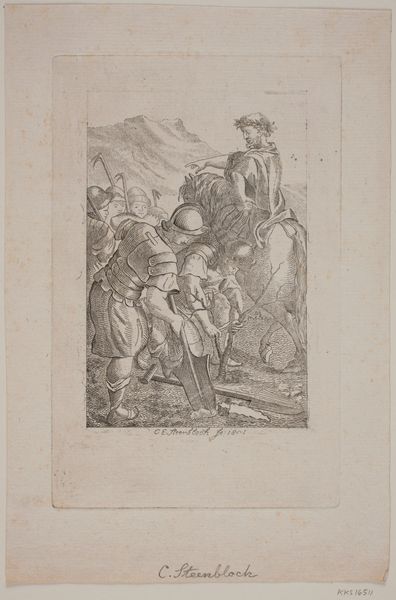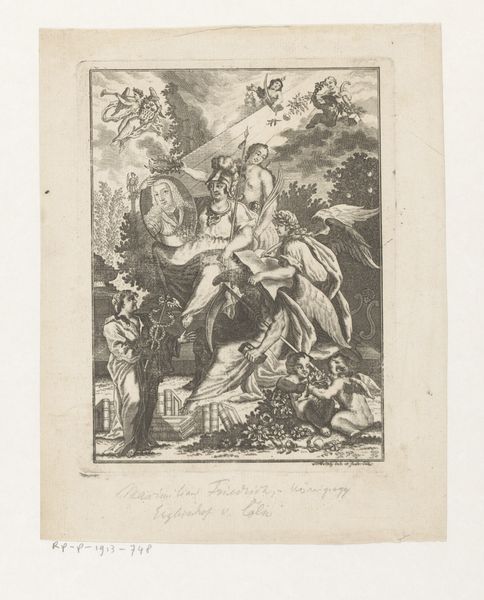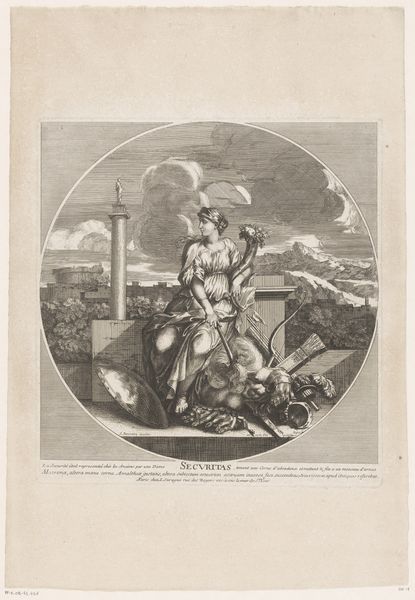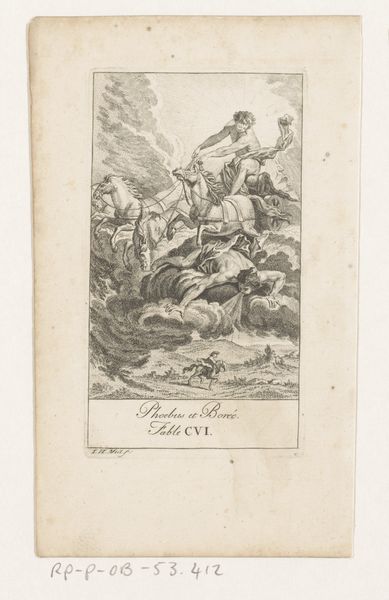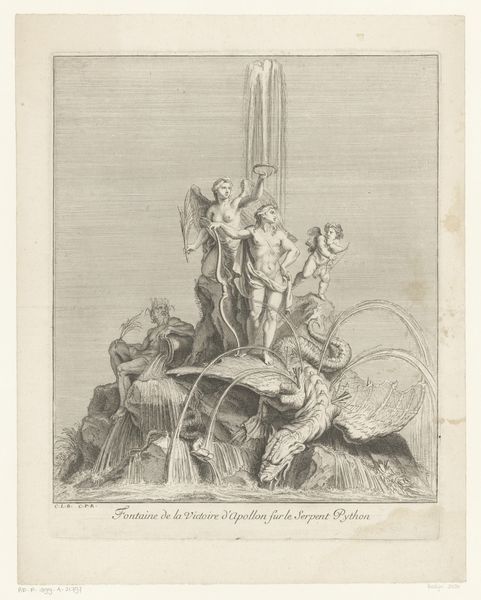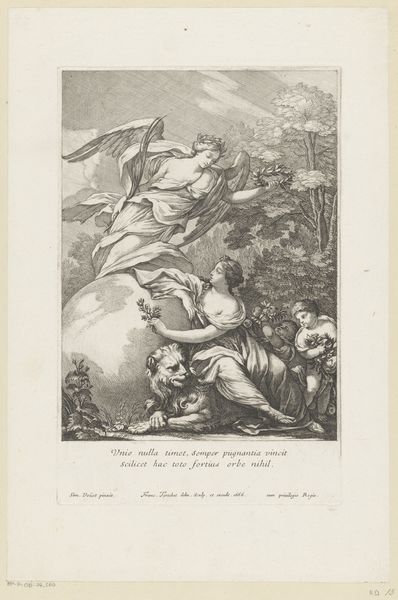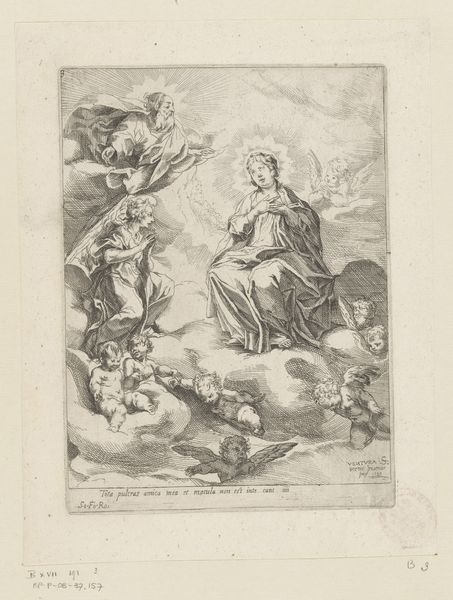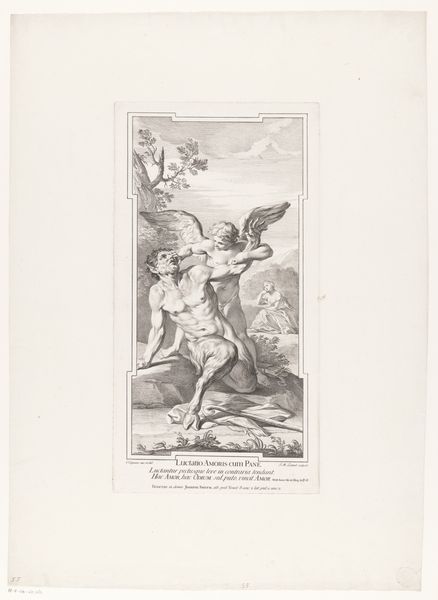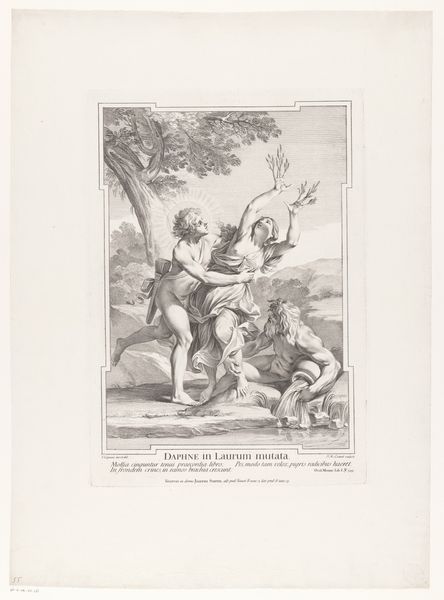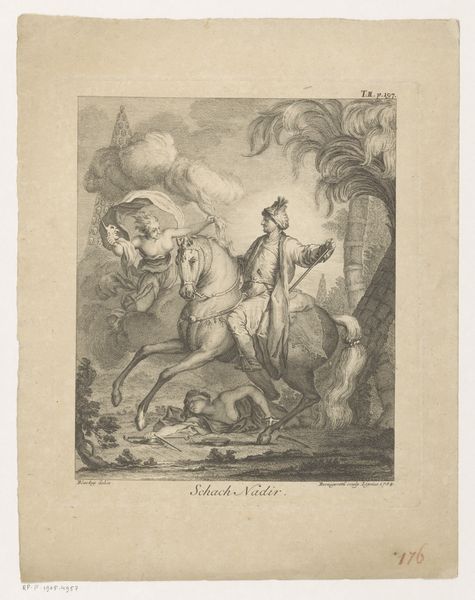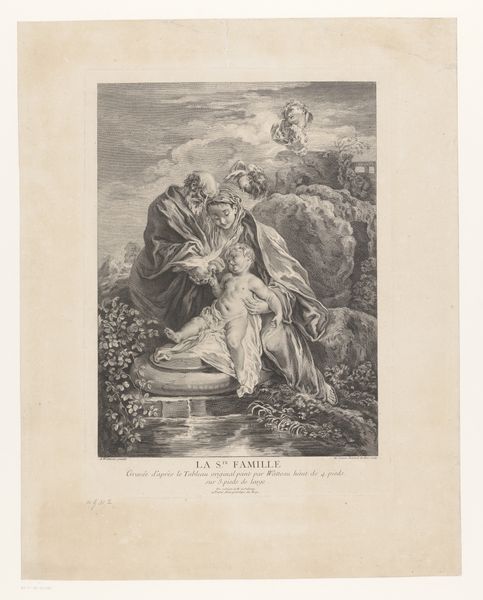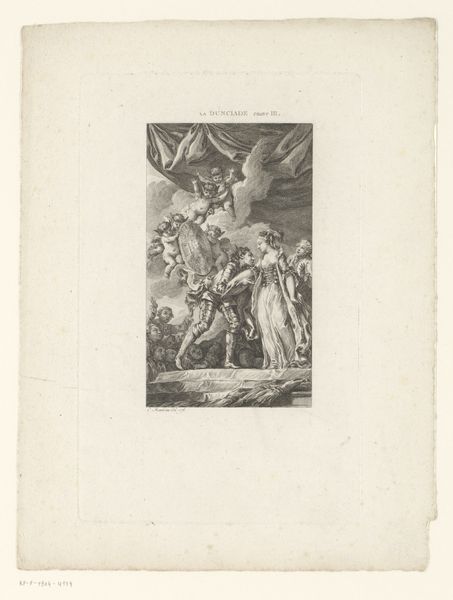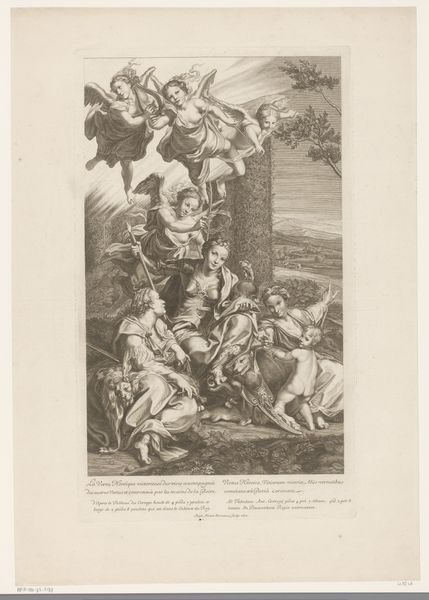
#
pencil drawn
#
photo of handprinted image
#
aged paper
#
toned paper
#
light pencil work
#
ink paper printed
#
pencil sketch
#
old engraving style
#
watercolour illustration
#
watercolor
Dimensions: height 296 mm, width 208 mm
Copyright: Rijks Museum: Open Domain
Johann Heinrich Rode created this etching, *Spotprent op de zelfoverschatting van de kunstschilder*, which translates to *Cartoon on the Self-Overestimation of the Painter*, sometime in the mid-18th century. It’s made using a printmaking technique that democratized image production during this period. The etching process involves using acid to cut into a metal plate, which is then inked and pressed onto paper. This technique allowed for the relatively quick reproduction of images, making art more accessible to a wider audience. But it's important to remember that behind this image is the labour involved, from the artisan's hand in cutting the plate to the press operator inking and printing it. Here, the rapid dissemination of imagery opens up questions of artistic pretension and the market. Consider how Rode critiques the artist's self-importance through the very medium that was changing the art world's social and economic dynamics. This challenges traditional views of artistic genius, highlighting the complex relationship between art, labor, and social critique.
Comments
No comments
Be the first to comment and join the conversation on the ultimate creative platform.
